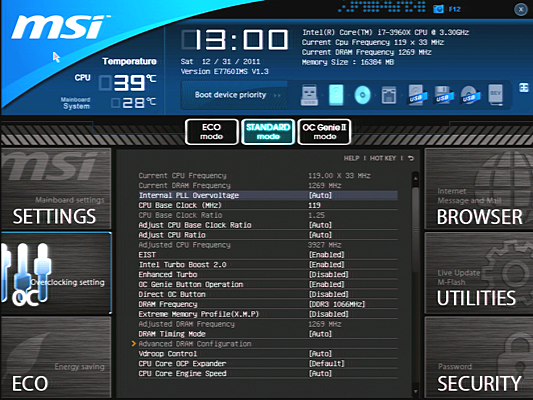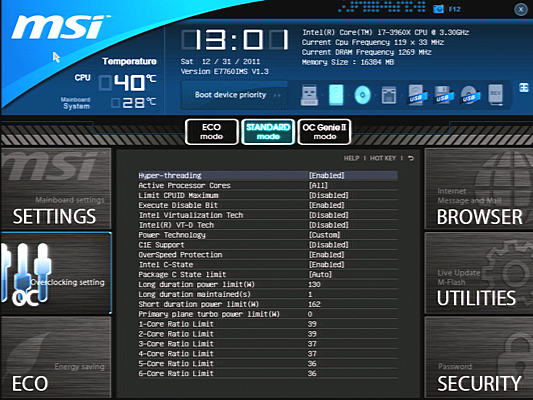Seven $260-$320 X79 Express Motherboards, Reviewed
With 40 lanes of PCIe 3.0 connectivity to host all of our high-bandwidth devices, LGA 2011 certainly qualifies as a premium processor interface. Today we examine seven X79-based motherboards that offer high-end features at a more palatable price.
X79A-GD65 (8D) UEFI
MSI loves its spectacular-scale menu buttons and clock display, though the design minimizes the settings that we actually want to read. The enthusiast-oriented clock and voltage controls are available through a menu that uses around one-third of the UEFI’s total screen space.
Disabling Intel Turbo Boost meant accepting a 12x multiplier on this platform, so we had to leave the frequency-altering feature enabled in order to overclock our processor. Unfortunately, this is one of many boards unable to overcome our Core i7-3960X's thermal sensor problem, which prevents it from scaling beyond stock Turbo Boost ratios. A 119 MHz base clock was our best overclocking option, using the 1.25x boot strap.
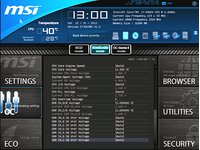
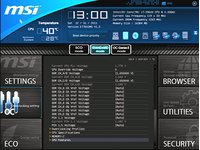
A setting of 1.35 V was reported back to us as 1.36 V, though our meter read it closer to the set value. MSI adds per-channel DRAM reference voltage to the standard set of CPU and chipset voltage levels.
Our overclock ran into an uncharacteristically large snag in the CPU Features submenu because this is the only board in the round-up that does not let us reduce Turbo Boost ratio settings. A 119 MHz base clock yielded 4.28 GHz with all cores loaded, and up to 4.64 GHz in lightly-threaded applications. Firmware would disable Intel C-states when we tried to increase the lower multipliers, triggering the bug in our CPU. When we re-enabled Intel C-states, the multiplier would drop to 12x. We’ll blame our CPU for the fact that we couldn't utilize its unlocked multiplier the way most enthusiasts would. However, our inability to drop the single-core Turbo Boost ratio below 39x is something that MSI needs to fix.
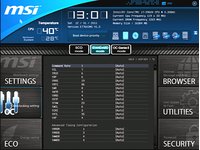
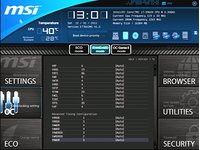
The X79A-GD65 (8D) provides a full set of primary and secondary memory timing controls, plus a few tertiary timings for those few overclockers who know how to use them.
Current page: X79A-GD65 (8D) UEFI
Prev Page MSI X79A-GD65 (8D) Next Page Test Settings And BenchmarksGet Tom's Hardware's best news and in-depth reviews, straight to your inbox.
